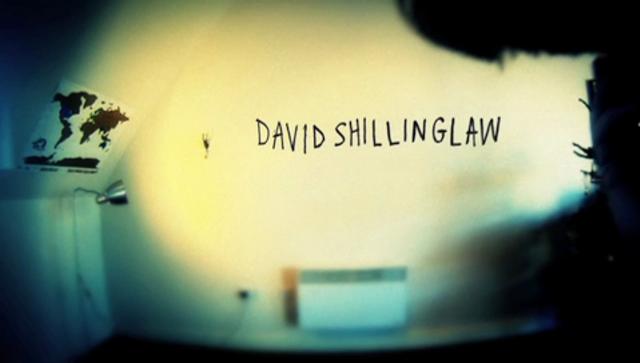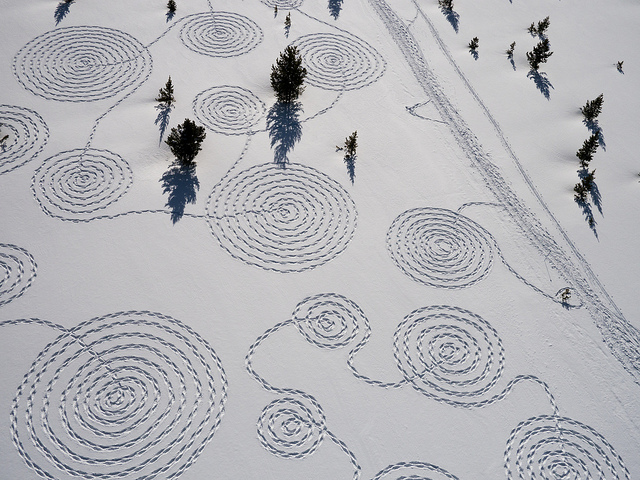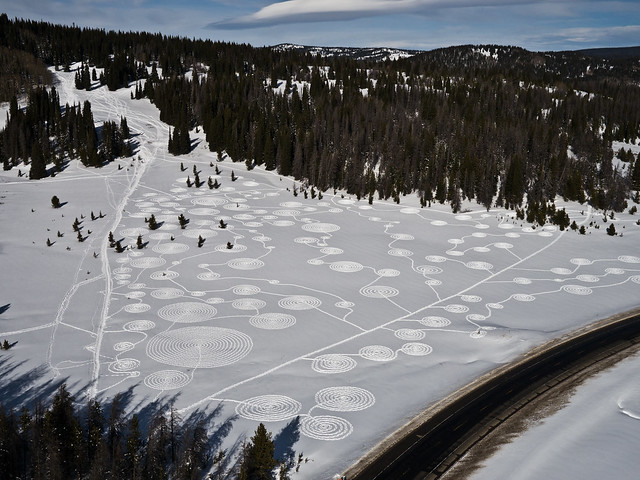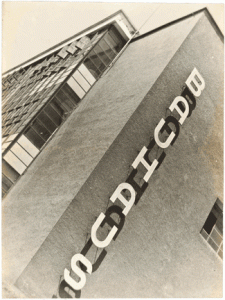 Last week The Barbican Centre opened its doors to a major exhibition about the highly influential Bauhaus movement. The show explores the German art and design school that ran between 1919 and 1933 and made a profound impact on our contemporary world by uniting art, craft, design and technology. Bauhaus: Art as Life brings together over 400 works and highlights the scope of the Bauhaus vision. Throughout the exhibition are examples of architecture, paintings, film, sculpture, furniture, costume design, photography, children’s toys, typography and textiles from names including Paul Klee, Ludwig Mies van der Rohe, Josef Albers and Oskar Schlemmer. Nothing it seems was too ambitious or insignificant for the Bauhaus masters to tackle, from redesigning teapots and ashtrays, to creating vast housing estates and design manifestos that aimed to change the world they lived within.
Last week The Barbican Centre opened its doors to a major exhibition about the highly influential Bauhaus movement. The show explores the German art and design school that ran between 1919 and 1933 and made a profound impact on our contemporary world by uniting art, craft, design and technology. Bauhaus: Art as Life brings together over 400 works and highlights the scope of the Bauhaus vision. Throughout the exhibition are examples of architecture, paintings, film, sculpture, furniture, costume design, photography, children’s toys, typography and textiles from names including Paul Klee, Ludwig Mies van der Rohe, Josef Albers and Oskar Schlemmer. Nothing it seems was too ambitious or insignificant for the Bauhaus masters to tackle, from redesigning teapots and ashtrays, to creating vast housing estates and design manifestos that aimed to change the world they lived within.
Bauhaus: Art as Life is displayed in a loosely chronological order, starting with Walter Gropius founding the school in 1919 by merging of the Arts and Crafts school and the Academy of Fine Art, a radical move that incorporated the disciplines of art, craft and technology. Having lived through the horror of the First World War, this collective of artists and designers were keen to use their creativity to herald a brighter future and you get a sense of the optimistic, utopian force behind the work. However the Bauhaus was not just about high design for the greater good, the students and teachers were also having a good time behind the scenes. The Bauhaus group put on events that could have rivaled Warhol’s infamous art happenings. Gropius actively encouraged socialising between the masters and students and this took the form of spectacular themed parties with a Bauhaus band, elaborate costumes and performances. Included in the exhibition are photographs documenting this playful side of the movement and party invites.
By the mid 1920’s we see architecture, advertising and photography added to the curriculum and the school started to become commercially successful by partnering up with manufacturers. There was a focus on branding and a unified approach to typography and layout, as we can see in the ‘instruments of communication’ section. Pioneered by Laszlo Moholy-Nagy, the Bauhaus had started to produce its own promotional material to communicate with a larger audience and this bold style has since become highly influential to the world of graphics. Elsewhere in the exhibition we also see Gunta Stolzl become the first female master at the Bauhaus, raising the profile of the crafts with her beautiful woven wall hangings. Josef and Anni Albers take a graphic slant on textiles, with simple geometric shaped patterns created from cotton and silk. As many of the Bauhaus group were on the political left, they came under pressure from the Nazi government and following pressure from the Gestapo, decided to close their doors in 1933. However as the students and masters emigrated, the principles behind the Bauhaus movement spread internationally and became the driving force behind Modernism as we know it.
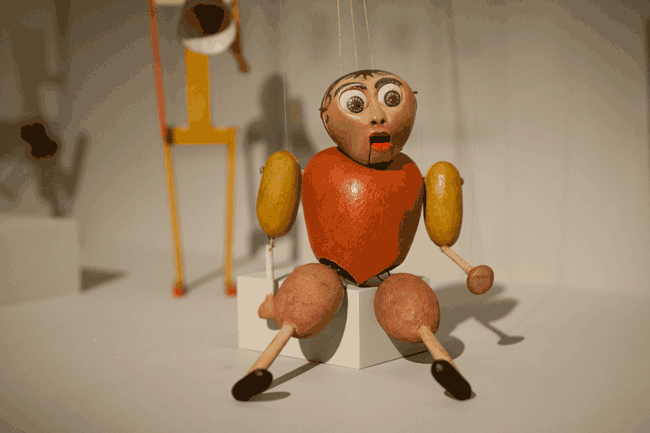
The Barbican is embracing the experimental spirit of the Bauhaus by hosting a diverse series of events and workshops relating to the exhibition. They have done a good job in making the links between the Bauhaus and its relevance on our everyday lives. The schedule includes guided walking tours around the Finsbury area looking at the Bauhaus influence on local housing estates and a tour of the City of London focussing on the relationship between the Bauhaus and commercial architecture. The Barbican will also host an experimental two-week ‘Art School Lab’ where a chosen group of artists will collaborate to create work that contributes towards social change. To be considered you must apply via the Barbican website.
If you are looking to take home a slice of Modernist design, head to the Barbican Gallery Shop where there is a great selection of iconic designs, in keeping with the Bauhaus philosophy that design should engage with production. These including geometric plates hand woven rugs, DIY Paul Klee puppet kits and an exclusive range of Bauhaus inspired jewellery from the BA students at Central Saint Martins.
Bauhaus: Art as Life . Barbican Art Gallery, London, 3 May – 12 May 2012. http://www.barbican.org.uk/
Review by Zoey Goto, freelance art and design writer and PR. www.zazzipr.com
More photos of the exhibition below
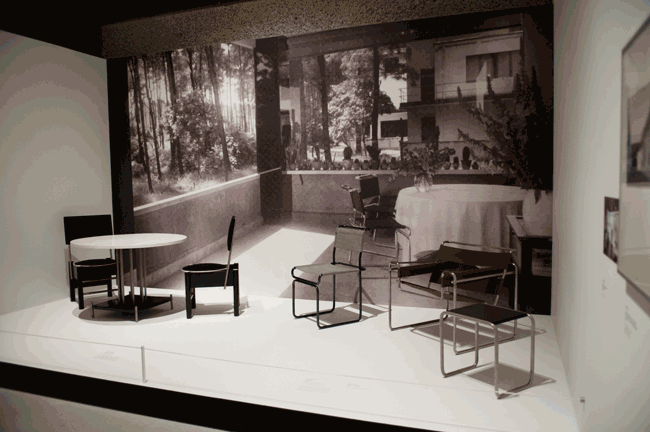
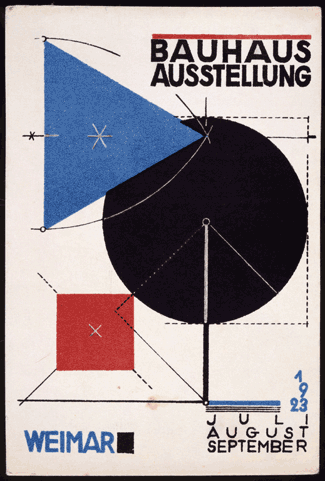
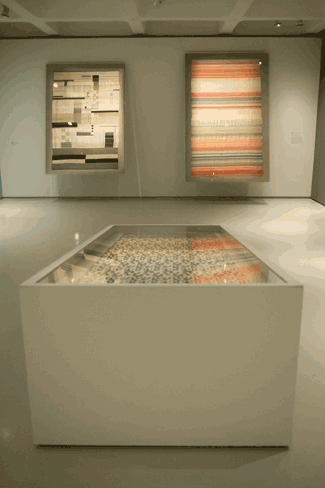

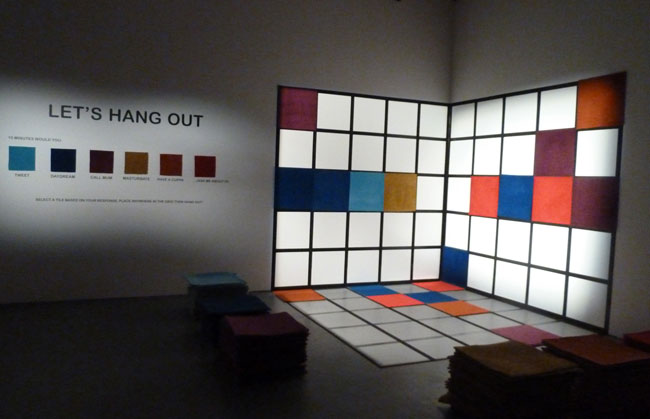

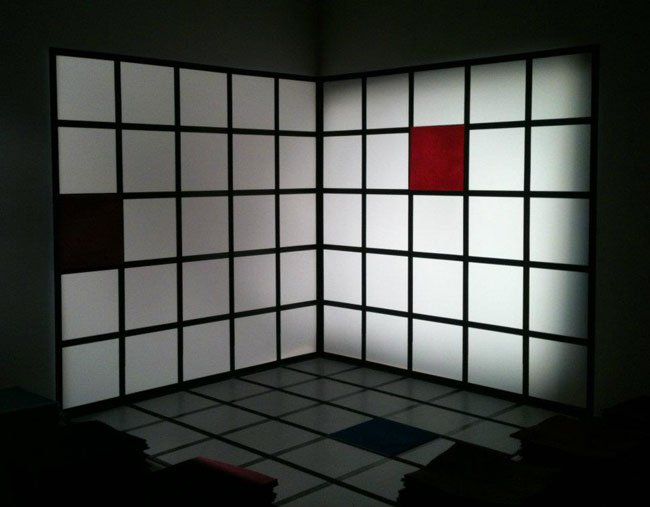

 Last week The Barbican Centre opened its doors to a major exhibition about the highly influential Bauhaus movement. The show explores the German art and design school that ran between 1919 and 1933 and made a profound impact on our contemporary world by uniting art, craft, design and technology. Bauhaus: Art as Life brings together over 400 works and highlights the scope of the Bauhaus vision. Throughout the exhibition are examples of architecture, paintings, film, sculpture, furniture, costume design, photography, children’s toys, typography and textiles from names including Paul Klee, Ludwig Mies van der Rohe, Josef Albers and Oskar Schlemmer. Nothing it seems was too ambitious or insignificant for the Bauhaus masters to tackle, from redesigning teapots and ashtrays, to creating vast housing estates and design manifestos that aimed to change the world they lived within.
Last week The Barbican Centre opened its doors to a major exhibition about the highly influential Bauhaus movement. The show explores the German art and design school that ran between 1919 and 1933 and made a profound impact on our contemporary world by uniting art, craft, design and technology. Bauhaus: Art as Life brings together over 400 works and highlights the scope of the Bauhaus vision. Throughout the exhibition are examples of architecture, paintings, film, sculpture, furniture, costume design, photography, children’s toys, typography and textiles from names including Paul Klee, Ludwig Mies van der Rohe, Josef Albers and Oskar Schlemmer. Nothing it seems was too ambitious or insignificant for the Bauhaus masters to tackle, from redesigning teapots and ashtrays, to creating vast housing estates and design manifestos that aimed to change the world they lived within.



